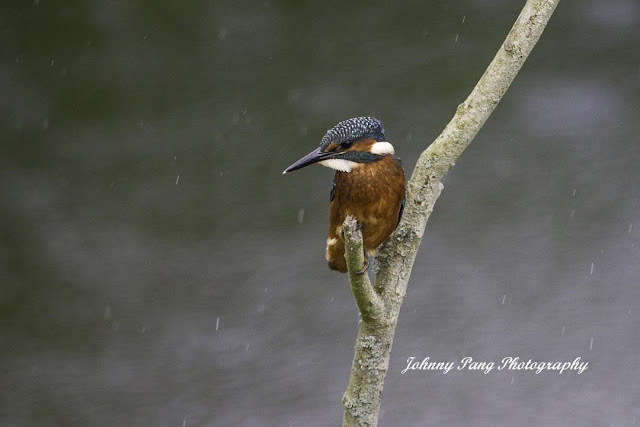

Lesser black-backed gulls and kestrel were both in evidence and this marsh harrier was making its return trip (rat was breakfast this morning!):
However - elation today when one chick had re-appeared - presumably the parents had stashed it in vegetation whilst the predators had their fill. Hopefully it'll give more people a view from South Marsh East number one hide - even if the odds are stacked against this little 'un:Purple heron by comparison showed spectacularly to hopefuls over the weekend in a performance lasting well into a combined several seconds as it briefly appeared from the reeds of the river and North Marsh - thanks to Johnny Pang for these great shots:
The last logged sighting was on Monday afternoon - but that's not to say its gone as it may just be a lack of observer coverage over the last couple of days given the hours put in over the weekend for small returns. Again kingfisher is the safer standby - Again thanks to Johnny for this latest portfolio of the reserve's top poser:
Sedge warbler fledgling on the marsh by Darren Smith - the adult cuckoos seem to have done their work now; so keep an eye out for fledglings:
Whist a black tailed godwit was present today, with a further forty-five on Sunday plus a smattering of green sandpiper reports, autumn has yet to get underway. It looks like the cetti's warblers have gone quiet so hopefully that concludes a successful breeding - as we've now released the news James has update the CES ringing blog with piccies of the bird all the details here.
So it's a great time to turn your attentions to other life - orchids make a late entrance this year by around three weeks - one of three pyramidal orchids this week:
And a total of circa thirty bee orchids this year amongst hundreds of marsh and common spotted:
White bryony by Roy L:
And dog rose by Roy L:
Thanks to Johnny too for these of azure damselfly:
Check out Martin Hodges' blog too for more insect updates including a smart array of new and old micro moth additions and some tasty hawk moths.
Grass snakes meanwhile are around six-weeks late this year. We had though many had died in the long winter - but they've just come out late - reports of eleven on some hay heaps two weeks ago and still plenty of impressive females about. Thanks to Brian Spence for these:
Reserve walk this Saturday at 10am as normal, followed by Harrier tours at 2pm both weekend days.




















